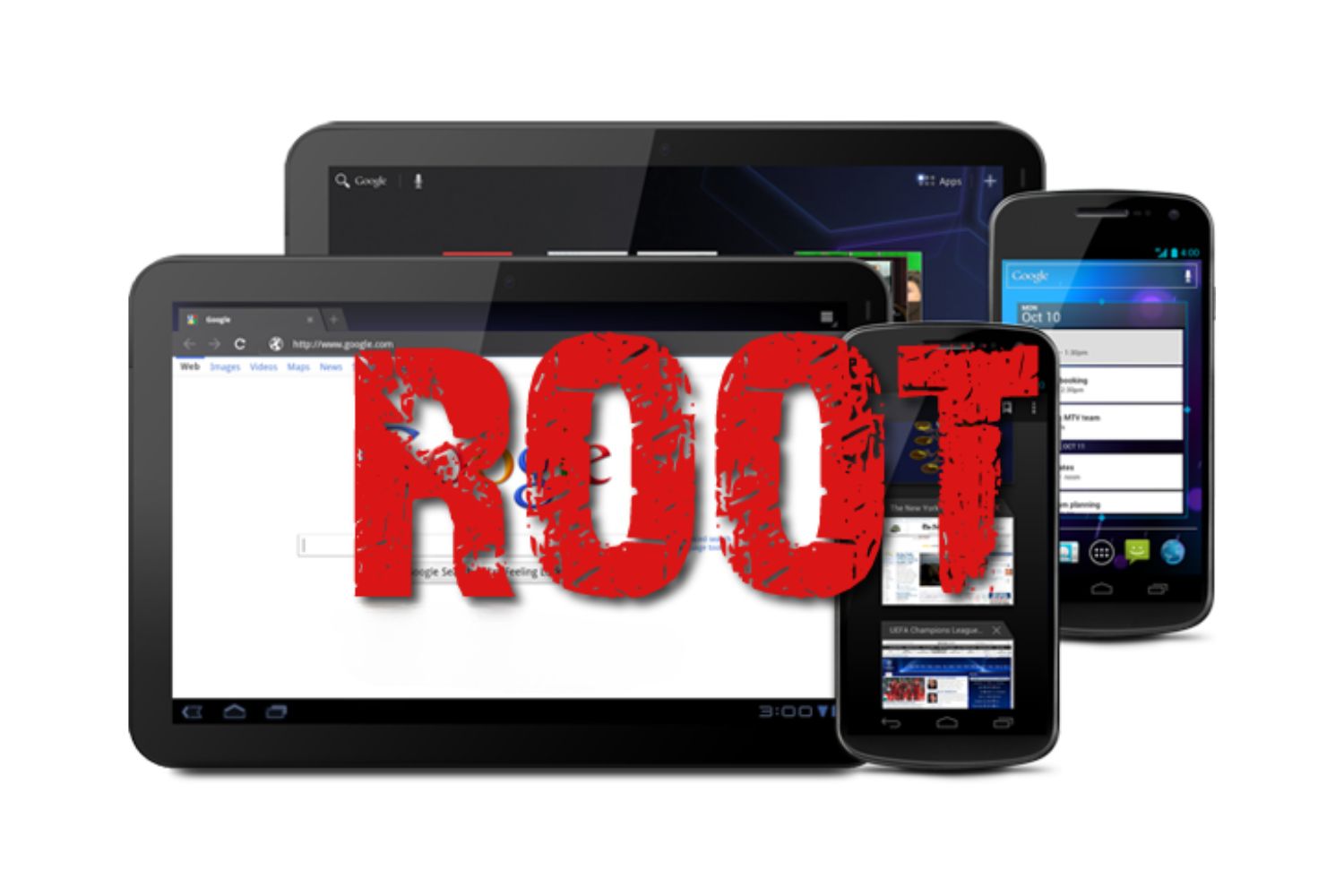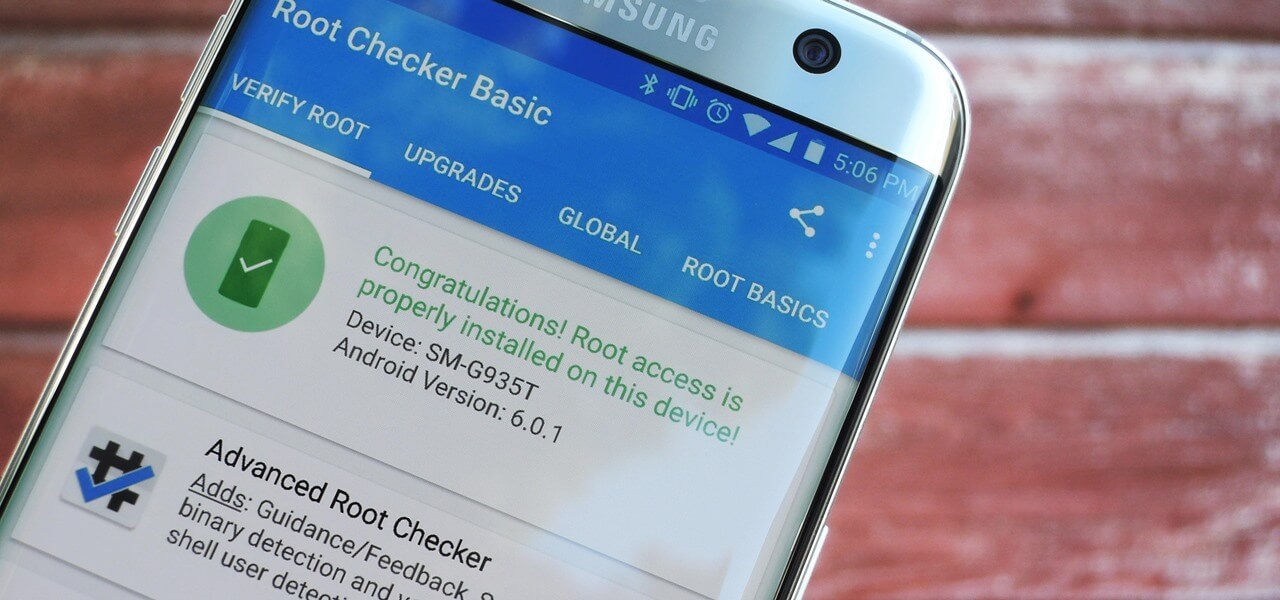Introduction
Rooting a phone or tablet has become a buzzword in the world of technology and mobile devices. You may have come across this term while exploring the endless possibilities of customizing your device or seeking ways to unlock its full potential. But what does it mean to “root” a phone or tablet, and why would anyone want to do it?
Rooting refers to the process of gaining administrative access or privileges, also known as “root access,” on your device’s operating system. Essentially, it is like having complete control over your device’s software, enabling you to make changes and modifications that are otherwise not allowed on a standard, non-rooted device.
So why would someone want to root their phone or tablet in the first place? Well, rooting opens up a world of possibilities and grants you the freedom to do more with your device than ever before. From installing custom ROMs to tweaking system settings, the benefits of rooting are undoubtedly enticing for tech-savvy users.
However, it’s important to note that rooting your device does come with certain risks. It can void your warranty, potentially expose your device to security vulnerabilities, and even result in “bricking” your device if not done correctly. So, before taking the plunge into rooting, it’s crucial to weigh the pros and cons and understand the potential consequences.
In this article, we will explore the intricacies of rooting a phone or tablet. We will discuss the benefits that come with rooting, the risks involved, and the methods to safely root your device. Whether you are a tech enthusiast looking to unlock your device’s full potential or a curious user wanting to learn more about rooting, this article will provide you with the information you need to make an informed decision.
What is Rooting?
Rooting is the process of gaining elevated privileges or administrative access to the Android operating system. In simpler terms, it allows you to access and modify the system files and settings that are otherwise restricted on a non-rooted device. Think of it as gaining “root” or superuser access to your phone or tablet.
By default, Android devices are designed with certain limitations to ensure stability, security, and prevent users from making unintentional or harmful changes to the system. However, rooting removes these restrictions, giving you full control over your device’s software. It is similar to jailbreaking on iOS devices.
When you root your Android device, you gain access to the system partition, allowing you to make modifications, install custom ROMs, remove pre-installed bloatware, and even overclock your device’s processor for enhanced performance. Additionally, you can customize the appearance of your device by installing themes, custom icons, and even changing the entire user interface if desired.
Moreover, rooting opens up the possibility of using powerful apps and tools that require administrative access. These apps can perform advanced functions such as automated backups, ad-blocking, in-depth system analysis, and even enable features that are exclusive to certain devices or versions of Android.
It is important to note that rooting is specific to Android devices. On other operating systems, such as iOS, Windows Phone, or BlackBerry, the process of gaining similar privileges may be referred to by different terms.
Overall, rooting allows you to have complete control over your Android device, unleashing its full potential and giving you the freedom to customize it to your liking. However, it is essential to understand the benefits and risks associated with rooting before proceeding, which we will discuss further in the following sections.
Why Root a Phone or Tablet?
Rooting a phone or tablet offers a plethora of advantages that can enhance your overall user experience and open up a world of possibilities. Here are some of the main reasons why people choose to root their Android devices:
- Customization: Rooting allows you to customize every aspect of your device. You can install custom ROMs, which are alternative versions of the operating system, offering unique features, improved performance, and the latest Android updates on older devices.
- Performance Boost: With root access, you can optimize your device’s performance by removing unwanted bloatware, freeing up system resources, and even overclocking the CPU for faster processing speeds.
- Advanced Controls: Rooting provides advanced control over system settings and features. You can fine-tune the behavior of apps, control app permissions, and enable features that are typically restricted on non-rooted devices.
- Backup and Restore: Root access allows you to back up and restore your entire device at a deep level, including system files, app data, and settings. This is especially useful when switching devices or recovering from a major software issue.
- Ad Blocking: Rooting enables you to block intrusive ads system-wide, improving your browsing experience and saving data. You can use ad-blocking apps that work at the system level and eliminate ads in all apps and websites.
- Improved Battery Life: Rooting gives you the ability to optimize your device’s battery performance. You can use apps and mods that enhance battery management, control background processes, and extend battery life.
- Access to Exclusive Apps: Some apps require root access to unlock their full potential. These apps can provide advanced file management, system tweaks, and exclusive features that are not available to non-rooted devices.
While these advantages may be appealing, it is important to weigh them against the potential risks and drawbacks of rooting, which we will explore in the subsequent sections.
Benefits of Rooting
Rooting your phone or tablet offers a wide range of benefits that can significantly enhance your overall Android experience. Here are some of the key advantages of rooting:
- Custom ROMs: Rooting gives you the ability to install custom ROMs, which are modified versions of the Android operating system. Custom ROMs offer a variety of features, improved performance, and even the latest Android updates on older devices. You can choose from a wide range of custom ROMs created by the Android community that cater to specific preferences and requirements.
- Enhanced System Control: Root access allows you to have full control over various system settings and features that are otherwise restricted. You can modify core system files, access advanced options, and fine-tune your device to meet your specific needs. This level of control enables you to personalize and optimize your device in ways that are not possible on non-rooted devices.
- Advanced Apps and Tweaks: Rooting grants you access to a multitude of apps and tweaks that require administrative privileges. These apps can offer advanced features, system-level modifications, and enhanced functionality. Examples include apps for ad-blocking, advanced backup and restore, automated task scheduling, and system-wide theming.
- Removal of Bloatware: Many non-rooted Android devices come preloaded with bloatware – unnecessary apps that take up storage space and resources. Rooting enables you to remove or freeze these apps, freeing up valuable storage space and improving device performance.
- Increased Performance: By gaining root access, you can optimize your device’s performance. You can overclock the CPU to achieve faster processing speeds, adjust system-level settings to improve efficiency, and optimize resource allocation for smoother multitasking.
- Deep Customization: Rooting allows for extensive customization options beyond what is available on non-rooted devices. You can change the entire look and feel of your device by installing custom themes, icons, fonts, and boot animations. Additionally, you can customize the device’s navigation buttons, status bar, and other visual elements.
- Full Backup and Restore: Root access enables you to perform complete backups of your device, including all system files, apps, and settings. This ensures that you have a comprehensive backup solution in case of data loss, and it makes transitioning to a new device a seamless process.
These are just a few of the many benefits that come with rooting your Android device. However, it is crucial to consider the risks and potential drawbacks associated with rooting, which we will discuss in the next section.
Risks of Rooting
While rooting your Android device provides numerous advantages, it also carries certain risks and potential drawbacks that you should be aware of. Here are some of the main risks associated with rooting:
- Voiding Warranty: Rooting your device typically voids its warranty, as it involves making modifications to the device’s software that are not supported by the manufacturer. This means that if any hardware or software issues arise after rooting, you may not be eligible for free repairs or replacements.
- Security Vulnerabilities: Rooting opens up the possibility of security vulnerabilities and exposes your device to potential risks. With root access, malicious apps or hackers can have deeper access to your device’s system files and sensitive data. It is crucial to use caution when granting root access to apps and only download from trusted sources.
- Bricking Your Device: The process of rooting involves making changes to the core system files, and if not done correctly, it can result in “bricking” your device. Bricking refers to rendering your device permanently unusable, akin to turning it into a brick. It is essential to follow the proper rooting procedures and use trusted rooting methods to minimize the risk of bricking.
- Instability and Software Issues: Rooting can introduce instability into your device’s system. Some custom ROMs or root modifications may have bugs or compatibility issues that could lead to crashes, freezes, or other software-related problems. It is important to do thorough research and choose stable and reliable custom ROMs if you decide to install them.
- Incompatibility with Updates: Rooting can make it challenging to install official system updates from the device manufacturer or carrier. These updates may detect root access and fail to install, or they could potentially undo the root access, removing all the customization and modifications you have made.
- Loss of Device-Specific Features: Some device-specific features or apps may not work correctly on rooted devices. This can include proprietary software, camera optimizations, or manufacturer-specific features that rely on the device’s original software configuration. Rooting may result in the loss or degradation of these features.
It is essential to weigh these risks against the benefits of rooting and consider your own comfort level with potentially voiding your warranty, exposing your device to security risks, or encountering software issues. Understanding the risks involved will help you make an informed decision about whether or not to root your Android device.
How to Root a Phone or Tablet
If you have decided to root your phone or tablet, it’s important to follow the proper procedures to ensure a successful and safe rooting process. Here are the general steps involved in rooting your Android device:
- Research: Before attempting to root your device, thoroughly research the specific model and version of your phone or tablet. Different devices may require different rooting methods, so it’s essential to find the most suitable method for your device.
- Backup Your Data: Before beginning the rooting process, make sure to back up all your important data, including contacts, photos, videos, and app data. This will ensure that you can restore your device in case anything goes wrong during the rooting process.
- Enable USB Debugging: In your device’s settings, enable USB debugging mode. This allows your device to communicate with your computer when rooting. The option is usually found in the Developer Options, which can be enabled by tapping on the Build Number multiple times in the About Phone section.
- Download Necessary Files and Tools: Download the required files and tools for rooting your specific device. These can include the rooting software, drivers, and any additional files needed for the process. Make sure to download these files from trusted sources.
- Connect Your Device to Your Computer: Use a USB cable to connect your device to your computer. Ensure that your computer recognizes your device and that the necessary drivers are installed.
- Run the Rooting Software: Open the rooting software on your computer and follow the instructions provided. The software will guide you through the rooting process specific to your device. Be patient and wait for the rooting software to complete the process.
- Reboot Your Device: Once the rooting process is complete, reboot your device. This will finalize the rooting and allow the changes to take effect. You may see a new app or icon related to the root access on your device.
- Verify Root Access: To ensure that your device has been successfully rooted, download and install a root checker app from the Google Play Store. This app will verify whether your device has root access or not.
It’s important to note that the specific steps and tools needed for rooting may vary depending on your device model, Android version, and even the rooting method you choose. Always refer to trusted sources, such as XDA Developers or the official website of the rooting software you are using, for detailed instructions and guidance specific to your device.
Remember, rooting your device carries certain risks, so proceed with caution and make sure you understand the process fully before attempting to root your phone or tablet.
Popular Rooting Methods
When it comes to rooting a phone or tablet, there are several popular methods that users can choose from. Here are some of the widely-used rooting methods:
- One-Click Rooting Apps: One-click rooting apps have gained popularity due to their simplicity and ease of use. These apps, such as KingoRoot, KingRoot, and Magisk, allow users to root their devices with just a single tap, eliminating the need for complex manual procedures. They typically work by exploiting system vulnerabilities to gain root access.
- Custom Recovery: Custom recovery methods, such as ClockworkMod (CWM) or Team Win Recovery Project (TWRP), involve installing a custom recovery image on your device. With a custom recovery installed, you can flash custom ROMs, root packages, and other modifications. Custom recoveries often have built-in features that simplify the rooting process.
- Flashable ZIP Files: Flashable ZIP files are packages that contain the necessary files to root your device. These files can be flashed through a custom recovery. Developers create flashable ZIP files specifically for different device models and Android versions, making it essential to find the correct file for your specific device.
- Manufacturer-Specific Tools: Some device manufacturers provide their own tools and utilities for rooting their devices. For example, Samsung offers Odin, a tool that can be used to install custom firmware or root packages on their devices. These manufacturer-specific tools are specific to certain device models and should be used with caution, following the proper instructions.
- Kernel Modification: Advanced users sometimes opt for kernel modification as a rooting method. This involves replacing the device’s kernel (the core of the operating system) with a custom kernel that allows for root access. Kernel modification requires in-depth knowledge and can be risky if done improperly.
It is important to note that not all rooting methods are compatible with every device or Android version. It is crucial to research the specific rooting methods available for your device and ensure compatibility before proceeding. Additionally, always refer to trusted sources, such as XDA Developers or the official websites of the rooting tools, for detailed instructions on how to use each method.
Choosing the right rooting method depends on your device model, Android version, and personal preferences. It’s important to carefully evaluate each method’s pros and cons and select the one that is most suitable for your needs and level of technical expertise. Remember to proceed with caution and fully understand the risks and requirements associated with each rooting method.
Pros and Cons of Rooting
Rooting your phone or tablet comes with a range of advantages, as well as some potential drawbacks. It’s important to consider both the pros and cons before deciding to root your device:
Pros of Rooting:
- Customization and Personalization: With root access, you can customize your device to your liking. You have the freedom to install custom ROMs, change system settings, and personalize the appearance of your device.
- Enhanced Performance: Rooting allows you to optimize your device’s performance by removing bloatware, tweaking system settings, and even overclocking the processor for faster speeds.
- Access to Advanced Apps and Features: Rooting grants you access to powerful apps and features that require administrative access. These apps can perform advanced functions like ad-blocking, system-wide backups, and in-depth system analysis.
- Removal of Bloatware: By rooting your device, you can uninstall or disable pre-installed bloatware that consumes storage space and system resources.
- System-Level Modifications: Root access enables you to modify core system files and settings, allowing for advanced tweaks and optimizations.
Cons of Rooting:
- Voiding Warranty: Rooting your device typically voids the manufacturer’s warranty, potentially leaving you responsible for repair costs.
- Security Risks: Rooting exposes your device to security vulnerabilities, as it allows apps and processes with root access to have greater control over your device’s system files.
- Potential Instability: Improperly rooting your device or installing unstable custom ROMs can lead to system instability, crashes, or other software-related issues.
- Incompatibility with Updates: Rooted devices may encounter difficulties when installing official system updates, as these updates can detect root access and may fail to install, or even remove the root access.
- Possibility of Bricking: Incorrectly performing the rooting process or using incompatible tools can result in “bricking” your device, rendering it unusable.
Each individual’s experience with rooting may vary depending on their device, technical expertise, and preferences. Before making the decision to root your phone or tablet, carefully weigh the pros and cons, consider the potential risks, and ensure you have a full understanding of the rooting process.
Frequently Asked Questions about Rooting
Rooting a phone or tablet can be a complex topic, and it’s natural to have questions surrounding the process and its implications. Here are answers to some commonly asked questions about rooting:
- Is rooting legal?
Rooting an Android device is generally legal, but it may void the device’s warranty. However, it is essential to understand the legal regulations specific to your country, as some regions have restrictions or laws surrounding rooting. - Can I unroot my device?
Yes, it is possible to unroot your device. Some rooting methods include an option to restore the device to its original, non-rooted state. You can also unroot a device by installing an official firmware update or using an unrooting tool. - Will rooting erase my data?
Rooting itself does not erase data, but it is recommended to back up your data before rooting. However, there is a possibility of data loss or device malfunction during the rooting process, so it’s crucial to have a backup in case of any issues. - Can I still receive official updates after rooting?
Rooting may prevent your device from receiving official over-the-air (OTA) updates. However, you can usually manually install official updates by unrooting or choosing custom ROMs that support OTA updates. - Is rooting safe?
Rooting can expose your device to security risks if not done carefully. By granting root access, malicious apps or processes may have deeper access to your device’s system files. It’s important to only download apps and files from trusted sources and practice caution. - Can I use banking or payment apps on a rooted device?
Some banking or payment apps may not work on rooted devices due to security concerns. These apps may detect root access and prevent usage for security reasons. However, there are methods like hiding root access with tools like Magisk that can bypass this restriction. - Will rooting increase the risk of malware?
Rooting itself does not directly increase the risk of malware. However, granting root access to untrusted or malicious apps can put your device at risk. It is important to exercise caution when granting root access and only download apps from trusted sources.
Remember, these are just general answers to some commonly asked questions about rooting. The specific answers may vary depending on device models, Android versions, and individual circumstances. It’s always recommended to research and seek guidance from trusted sources before proceeding with rooting your phone or tablet.
Conclusion
Rooting a phone or tablet can be an exciting endeavor, offering users the opportunity to unlock the full potential of their Android devices. With root access, you gain the freedom to customize your device, optimize performance, and access advanced features and apps. However, it is crucial to understand the risks and potential drawbacks associated with rooting.
By carefully considering the pros and cons, conducting thorough research, and following the proper procedures, you can make an informed decision about whether or not to root your Android device.
Remember that rooting voids the device warranty, exposes the device to potential security risks, and can result in instability or even bricking if done incorrectly. It is essential to weigh these risks against the benefits and consider your own comfort level and technical capabilities before proceeding.
If you do decide to root your phone or tablet, make sure to use trusted rooting methods, download files from reputable sources, and exercise caution when granting root access to apps. Regularly back up your data and stay updated on the latest developments in the rooting community to ensure the best and safest experience.
Ultimately, the decision to root your device is a personal one. Whether you choose to explore the endless customization options and advanced functionality of a rooted device or prefer to stick with the stability and security of a non-rooted device, remember that the choice is yours to make.

























